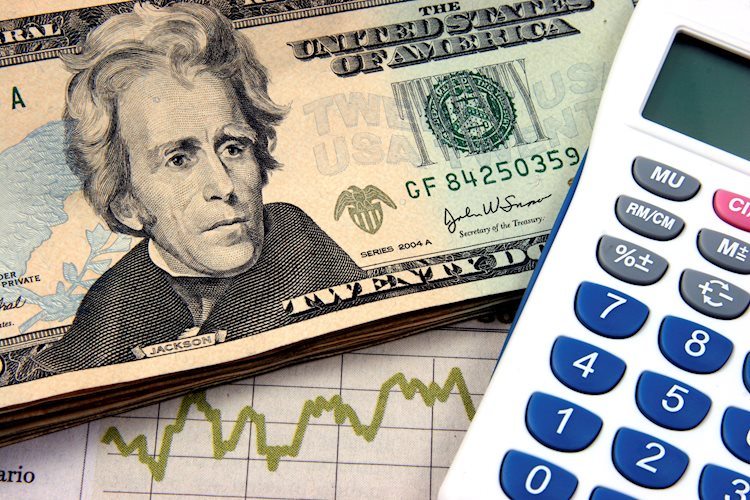- The US Dollar gathers strength to around 103.60 in Thursday’s early European session, up 0.12% on the day.
- The rising bets that the Fed will gradually lower interest rates support the USD.
- The US Retail Sales data will take center stage on Thursday.
The US Dollar Index (DXY) extends the rally to multi-week tops near 103.60 during the early European session on Thursday. The rising expectation that the US Federal Reserve (Fed) will proceed with modest interest rate cuts over the next year continues to underpin the Greenback. Traders brace for the US September Retail Sales data, which is due later on Thursday.
The Fed kicked off its easing cycle with a jumbo move by 50 basis points (bps) at its last policy meeting in September, but market expectations have shifted to a slower pace of Fed rate cuts, boosting the USD broadly. San Francisco Fed President Daly emphasized that “one or two cuts was a reasonable thing” as the US economy is more balanced. Meanwhile, Atlanta Fed President Bostic stated that he has one more 25 basis points (bps) rate cut pencilled in for this year.
Minneapolis Fed President Neel Kashkari said earlier this week that future interest rate cuts would be “modest” and noted that policy decisions would depend on economic data. The markets have priced in nearly 92.1% chance of a 25 bps Fed rate reduction in November, according to the CME FedWatch tool.
The US Retail Sales will be in the spotlight on Thursday, which is expected to rise to 0.3% MoM in September from 0.1% in August. If the data remain strong, there is still scope for these Fed easing expectations to adjust further.
On the other hand, some easing in geopolitical tensions in the Middle East could cap the upside for the Greenback. Israel told the United States that a planned retaliatory attack on Iran won’t target nuclear and oil facilities, according to senior Biden administration officials, a promise sought by the White House to head off further Middle East escalation, per the Wall Street Journal.
US Dollar FAQs
The US Dollar (USD) is the official currency of the United States of America, and the ‘de facto’ currency of a significant number of other countries where it is found in circulation alongside local notes. It is the most heavily traded currency in the world, accounting for over 88% of all global foreign exchange turnover, or an average of $6.6 trillion in transactions per day, according to data from 2022. Following the second world war, the USD took over from the British Pound as the world’s reserve currency. For most of its history, the US Dollar was backed by Gold, until the Bretton Woods Agreement in 1971 when the Gold Standard went away.
The most important single factor impacting on the value of the US Dollar is monetary policy, which is shaped by the Federal Reserve (Fed). The Fed has two mandates: to achieve price stability (control inflation) and foster full employment. Its primary tool to achieve these two goals is by adjusting interest rates. When prices are rising too quickly and inflation is above the Fed’s 2% target, the Fed will raise rates, which helps the USD value. When inflation falls below 2% or the Unemployment Rate is too high, the Fed may lower interest rates, which weighs on the Greenback.
In extreme situations, the Federal Reserve can also print more Dollars and enact quantitative easing (QE). QE is the process by which the Fed substantially increases the flow of credit in a stuck financial system. It is a non-standard policy measure used when credit has dried up because banks will not lend to each other (out of the fear of counterparty default). It is a last resort when simply lowering interest rates is unlikely to achieve the necessary result. It was the Fed’s weapon of choice to combat the credit crunch that occurred during the Great Financial Crisis in 2008. It involves the Fed printing more Dollars and using them to buy US government bonds predominantly from financial institutions. QE usually leads to a weaker US Dollar.
Quantitative tightening (QT) is the reverse process whereby the Federal Reserve stops buying bonds from financial institutions and does not reinvest the principal from the bonds it holds maturing in new purchases. It is usually positive for the US Dollar.
Read the full article here

